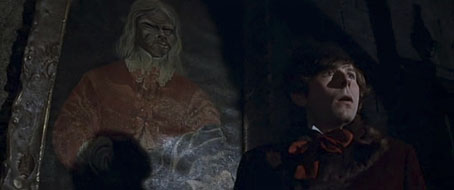
Roman Polanski as Alfred in Dance of the Vampires (1967).
I’ve always admired the attention to detail in Roman Polanski’s films, a quality evident not only in his careful adaptations but also in areas that lesser filmmakers might ignore. Dance of the Vampires (1967) is a good example (sorry, I refuse to call it by the title MGM used for its edited US release): the sets and decor are remarkable, and the editing and camera work so skilfully blends studio constructions with location shots that for years I was convinced the film was made in a genuine European castle. The atmosphere is so carefully sustained that I found the whole thing as terrifying on first viewing as any Hammer film, despite the broad humour. In the set-piece moments Polanski (and soundtrack composer Krzysztof Komeda) put many of the later Hammer vampire films to shame.
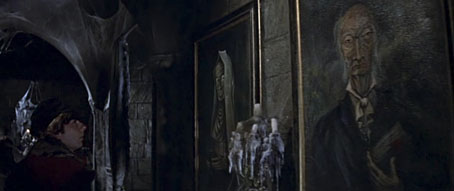
The Vampire Portraits
The production design and art direction for Dance of the Vampires was created by Wilfred Shingleton and Fred Carter, both of whom later worked on Polanski’s Macbeth, and who fill the rooms with mouldering furnishings and rotting decoration. One striking sequence concerns a walk through a gallery of vampire portraits that are the creepiest paintings seen on film since Ivan Albright’s portrait of a decrepit Dorian Gray. Film credits in the 1960s were sparse so there’s no indication of the artist responsible. However, one portrait glimpsed at the end of the gallery (below) is a copy of the “Ugly Duchess” painting by Quinten Matsys.
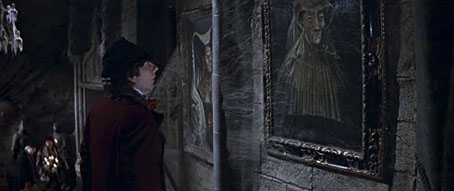
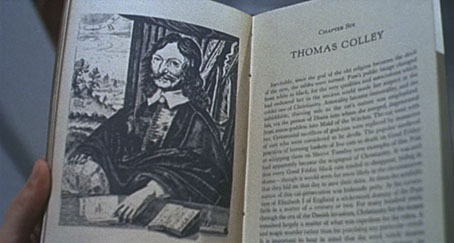
Rosemary’s Book
A sign that filmmakers care about detail is when they make their fictional books look like the genuine article. The history of witchcraft in Rosemary’s Baby (1968) could easily have been glimpsed very briefly but Polanski shows Rosemary leafing through its pages in a sequence of Hitchcock-like view-reaction-view shots that make it appear as convincing as possible. The shots also make the viewer examine the book through Rosemary’s eyes, something Polanski does throughout the film.
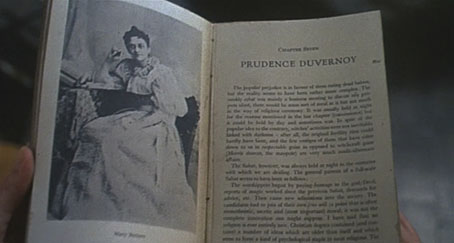
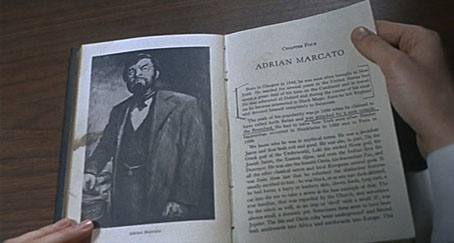
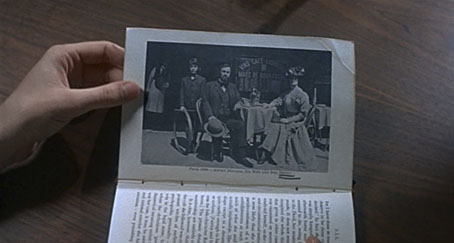
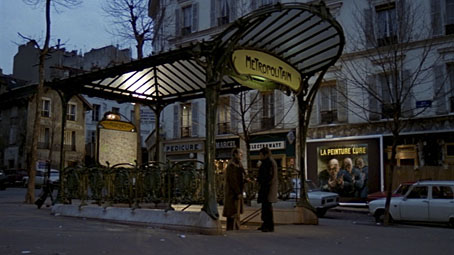
Trelkovsky’s Paintings
The Tenant (1976) is Polanski’s third study of apartment-dwelling paranoia, a superb adaptation of Roland Topor’s novel, Le Locataire chimérique (1964). The screenplay removes some of Topor’s ambiguity—and the film is spoiled by unsympathetic dubbing of the French actors—but in every other respect it’s as good as Repulsion for its portrait of an isolated individual (here portrayed by Polanski himself) surrendering to madness.
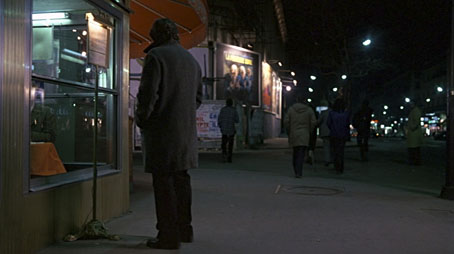
Among the many visual details which add to the unease is the appearance halfway through the film of billboards advertising…what? A painting exhibition? Or something more sinister? We never find out. The presence of these figures and their slogan—”La Peinture Lure”—remains as cryptic as many of the other unresolved questions which prey upon the beleaguered Trelkovsky.
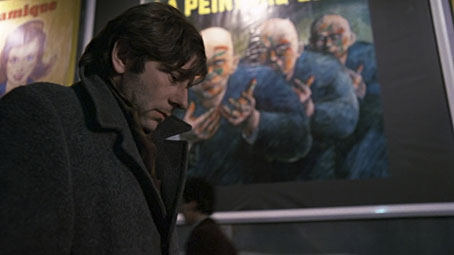
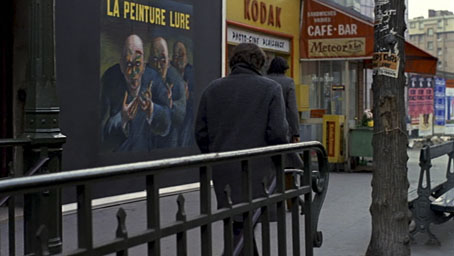
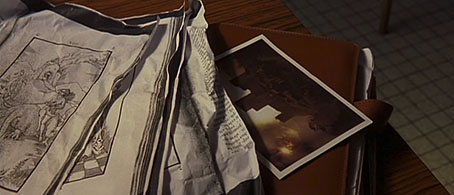
Corso’s Postcard
I’m in the minority of people who like The Ninth Gate (1999) a great deal even though it takes some liberties with Arturo Pérez-Reverte’s wonderful novel The Dumas Club. Once again, the bibliographic details are perfectly done, a crucial matter in a film about the antiquarian book trade. Near the end of the film Dean Corso (played by Johnny Depp) finds a postcard that leads him to the final location. On the back of the card there’s a blink-and-you-miss-it detail. Polanski’s wife, Emmanuelle Seigner, plays the mysterious and nameless woman who follows Corso throughout the film. By this point we already know she possesses occult powers so it’s not really surprising to see her face in the postage stamp, something that Corso doesn’t seem to notice.
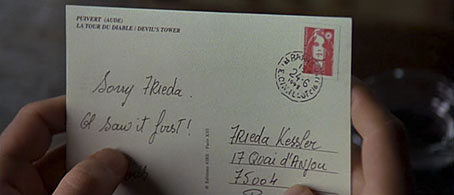
Previously on { feuilleton }
• Repulsion posters
• Atalanta Fugiens
• Le Grand Macabre
• Les Temps Morts by René Laloux
• The writhing on the wall

Isn’t there a rule that when Komeda’s mentioned, his great album Astigmatic is, too?
There isn’t? Perhaps, there should be, so here’s a link to its shortest track, “Kattorna,” in dismal lo-fi: http://www.youtube.com/watch?v=vdv-mpnsl9E
Ashamed to say I’ve not heard any of Komeda’s albums. I was enjoying his jazzy score for Knife in the Water when watching that again last night.
Ashamed? Surely, not.
Still, if you get the chance, give Astigmatic a listen. It is an album, like Rollins’ Saxophone Colossus, that seems to stand apart from the crowd. I’m not smart enough to say what the trick is–there are other records that one would swear are as good, but they don’t ‘pop’ in the same way.
Regarding the stamp, I’m not sure this was intended. French basic stamps from this period (90’s) looked like that : http://www.chouyosworld.com/wp-content/uploads/2010/03/Timbre-Marianne-de-Briat.jpg
But there might be a resemblance…
Thanks, Piotr. I haven’t been back and checked for sure but I recall the director mentioning the stamp in the commentary.
My favourite part about Vampires is the joke about the Jewish vampire being undeterred by the girl’s crucifix.
“La peinture lure” means, obviously, “painting lures” (hence the figures’ beckoning gesture; but it also sounds like “peinturlure”, which means daub or splatter with paint, hence the characters’ face paint. In other words it’s kind of a bad pun. The bald figures look like Topor’s work to me.
Yes, the paintings may be by Topor, who was no doubt present when the film was being made, but his colour style is almost always pen work with watercolour. If I’d have bought the Topor art book I saw when I was in Paris I’d have a better idea.
Dance of the Vampires is indeed very creepy for a comedy. I was a Hammer- obsessed child the first time I watched it and (despite the jokes) I remember being genuinely disturbed by the oppressive atmosphere and sense of inescapable doom. It’s a very silly movie in many respects but as the Professor and Polanski clown around the castle you are constantly aware that THE SUN IS SETTING. Glorious ending too.
I’m always impressed by the way he outdid Hammer at every turn even while making a comedy. The comparison may be unfair as I expect he had a larger budget than the average Hammer film but his direction is a lot better than Terence Fisher and co. Always loved the two scenes with the mirrors–a familiar moment yet Polanski does it better than anyone else.